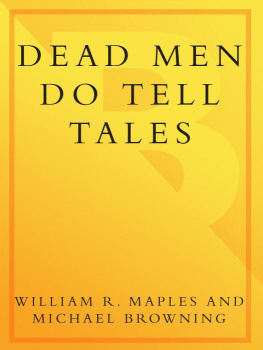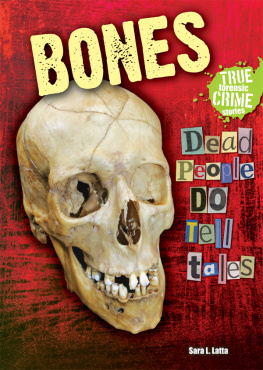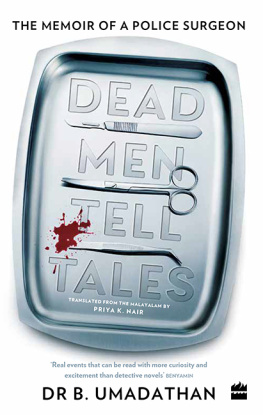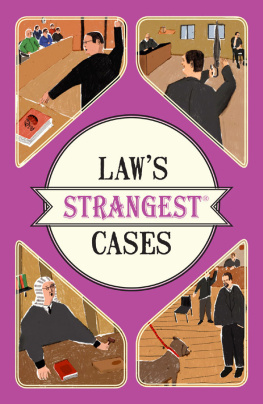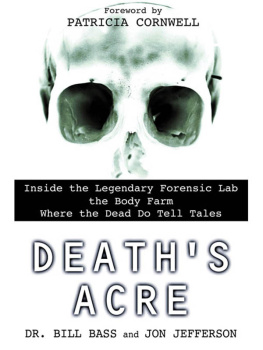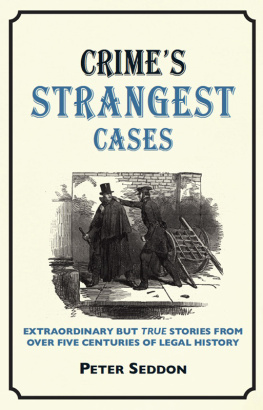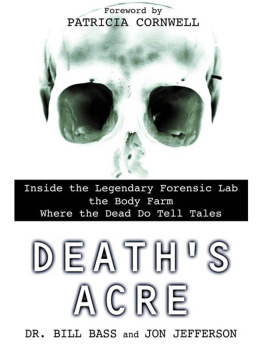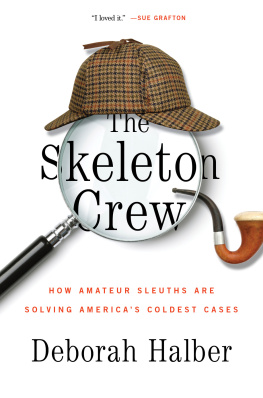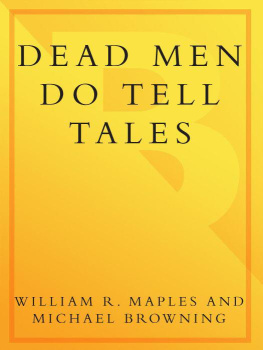The hand of the Lord was upon me, and carried me out in the spirit of the Lord, and set me down in the midst of the valley, which was full of bones, and caused me to pass by them roundabout: and behold there were very many in the open valley; and lo, they were very dry. And he said to me, Son of man, can these bones live? And I answered, O Lord God, Thou knowest.
Ezekiel 37:1-3.
To Margaret, Lisa and Cynthia, who never complained about the long hours I spent in the laboratory, or the bizarre stories I brought home.
W.R.M.
To Allison, Matthew and Noah, who know that the sun shines east, and the sun shines west.
M.C.B.
Table of Contents
1
Every Day Is Halloween
I obtained leave to go down into the valley of death and gratify a reprehensible curiosity. Death had put his sickle into this thicket and fire had gleaned the field. The bodies [lay] half-buried in ashes; some in the unlovely looseness of attitude denoting sudden death by the bullet, but by far the greater number in postures of agony that told of the tormenting flame. Their clothing was half burnt awaytheir hair and beard entirely; the rain had come too late to save their nails. Some were swollen to double girth; others shriveled to manikins. According to degree of exposure, their faces were bloated and black or yellow and shrunken. The contraction of muscles which had given them claws for hands had cursed each countenance with a hideous grin. Faugh !
Ambrose Bierce, What I Saw of Shiloh.
I seldom have nightmares. When I do, they are usually flitting images of the everyday things I see on the job: crushed and perforated skulls, lopped-off limbs and severed heads, roasted and dissolving corpses, hanks of human hair and heaps of white bonesall in a days work at my office, the C. A. Pound Human Identification Laboratory of the Florida Museum of Natural History at the University of Florida. Recently I dreamed I was in a faraway country, trying on shoes, and the leather in the shoes was so improperly prepared that the laces and uppers were crawling with maggots. But there was a simple, ordinary explanation for this phantasm: one of my graduate students was raising maggots as part of a research project.
I have gazed on the face of death innumerable times, witnessed it in all its grim manifestations. Death has no power to freeze my heart, jangle my nerves or sway my reason. Death to me is no terror of the night but a daylit companion, a familiar condition, a process obedient to scientific laws and answerable to scientific inquiry.
For me, every day is Halloween. When you think of all the horror movies you have seen in your entire life, you are visualizing only a dim, dull fraction of what I have seen in actual fact. Our laboratory is primarily devoted to teaching physical anthropology to graduate students at the University of Florida, and is part of the Florida Museum of Natural History. Yet, thanks to the wording of the 1917 law establishing the museum, we often find ourselves investigating wrongful death, attempting to dispel the shadows surrounding murder and suicide. All too often in the past, under the old coroner system, the innocent have died unavenged, and malefactors have escaped unpunished, because investigators lacked the stomach, the knowledge, the experience and the perseverance to reach with both hands into the rotting remnants of some dreadful crime, rummage through the bones and grasp the pure gleaming nugget of truth that lies at the center of it all.
Truth is discoverable. Truth wants to be discovered. The men who murdered the Russian Tsar Nicholas II and his family and servants in 1918 imagined that their crime would remain hidden for all eternity, but scarce sixty years passed before these martyred bones rose up again into the light of day and bore witness against their Bolshevik assassins. I have seen the tiny, wisp-thin bones of a murdered infant stand up in court and crush a bold, hardened, adult killer, send him pale and penitent to the electric chair. A small fragment of a womans skullcap, gnawed by alligators and found by accident at the bottom of a river, furnished enough evidence for me to help convict a hatchet murderer, two years after the fact.
The science of forensic anthropology, properly wielded, can resolve historical riddles and chase away bugbears that have bedeviled scholars for centuries. Reluctantly but carefully, I examined the skeletal remains of President Zachary Taylor, who died in 1850, and helped lay to rest persistent suspicions that he was the first of our presidents to be assassinated. The sword-nicked skull of the butchered Spanish conquistador, Francisco Pizarro, came within my field of inquiry, and I have held in my hands the bony orb that once enclosed vast dreams of gold, blood and empire. The gargoyle-like skull and skeleton of the Victorian-era Elephant Man, Joseph Merrick, furnished me with pictures and impressions so poignant and vivid that I almost seemed to be conversing with the man himself.
But I do not seek out the illustrious dead to pay them court or borrow their fame. To me, the human skeleton unnamed and unfleshed is matter enough for marvel. The most fascinating case I ever had involved a modern, love-struck couple with very ordinary names: Meek and Jennings. It fell to me to extricate their bones, burned and crushed and commingled in thousands of fragments, from a single body bag, and put them back together again as best I could. When I was finished, after a year and a halfs work, what I had was what lies deepest within all of us, at our center; that which is the last of us ever to be cut, burned, disassembled or dissolved; that which is strongest, hardest and least destructible about us; our firmest ally, our most trustworthy companion, our longest surviving remnant after we die: our skeleton.
I have often wondered whether I have a character flaw, to be so drawn to deathly things. I have always wanted to see the true facts of human existence, no matter how ugly. From a very early age I wanted to see life as it really was, not through the smudged window-pane of a newspaper or by means of the flickering picture of a movie newsreel. I wanted an uncensored view of reality. I did not want to know death from a neatly typed autopsy report, or from the body banked with flowers and surmounted by a stainless steel coffin lid at a funeral parlor. All my life I have been curious about death as it is, as it happens.
I was born in Dallas, Texas, on August 7, 1937. One of my grandfathers was a Methodist preacher, the other a saddle maker. My father was a banker who died when he was only forty, of cancer. I was just eleven. He was a man of strict morals who set a high premium on education. I grew up in a house filled with books and magazines such as Colliers and the Saturday Evening Post. The dictionary was one of the most used books in our library and reading was nearly as natural as breathing to me. I knew nine months before my father died that he was not going to recover, that the end was inevitable. This was a great sorrow to me; but in his last days my father said something that filled me with pride. He was giving some final instructions to my mother. He urged her to make sure that my brother, who was a splendid athlete, went to college. He did not mention me.
What about Billy? my mother asked him.
Dont worry about Billy. Hell be all right, my father replied; and his deathbed faith in me has heartened me all my life.
One formative childhood event sticks out in my mind. It involved the great 1930s woman outlaw, Bonnie Parker, of

